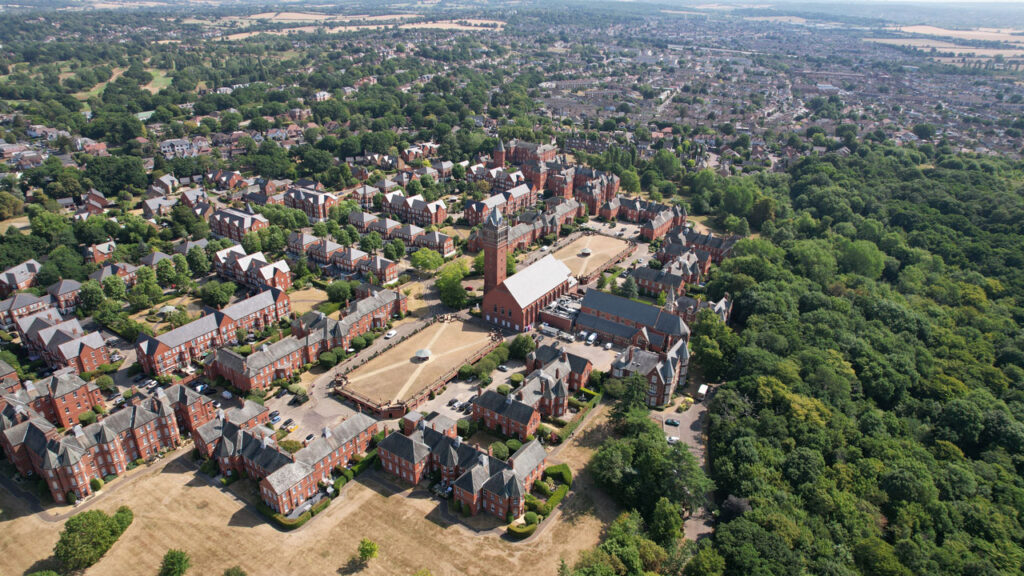
Summer in the city: Heatwaves set to intensify with climate change
Heatwaves are periods of abnormally hot weather usually lasting several days. Scientists are warning that we have not seen anything close to the most intense heatwaves possible under today’s climate, let alone the ones we expect to see in the coming decades.
We asked climate scientists at the National Centre for Atmospheric Science about heatwaves, climate change, and what this means for UK summers in cities such as London.
What are heatwaves and how is climate change affecting them?
Human-induced climate change means that summer weather is occurring on top of a warmer background climate. With every degree of warming to the Earth’s climate, the frequency and intensity of heatwaves are projected to get worse.
Heatwaves pose a risk to everyone’s health. In particular, heatwaves are hazardous to older people, children, people with pre-existing medical conditions, and those working long hours and in extreme conditions or exertive roles, e.g. factory or construction workers.
“Heatwaves can be deadly, and we must treat them with enormous seriousness. We can limit future damages, and the potential for them to become even worse, by making rapid and substantial cuts to our emissions of greenhouse gases,” says Professor Andrew Turner from the National Centre for Atmospheric Science and University of Reading.
Heatwaves in recent years clearly show that human-induced climate change is already damaging and even destroying lives and livelihoods across the world. In the next three decades, heatwaves could become two to seven times more frequent across the world – including Europe and the UK – than in the last 30 years.
“Climate change has been thought of as a problem for future generations, but the climate has already changed and we are already experiencing the impacts here in the UK and around the world,” says Professor Rowan Sutton, climate scientist at the National Centre for Atmospheric Science and University of Reading.
Can heatwave forecasts help people prepare for hot weather?
In July 2022, the UK’s Met Office issued the first ever red warning for extreme heat in the UK, alerting people to the widespread impacts of record heat and severe weather.
Temperatures soared to above 40°C, providing a glimpse of our future and the disruption to travel and infrastructure and risk to people’s health we are to expect.
We need to get better at finding ways to respond to heatwaves when they are forecast and further in advance, for example developing infrastructure adaptations, and changing our patterns of work and travel.
Future impacts will be even more severe unless we develop much more effective strategies to prepare and protect people, and reduce our greenhouse gas emissions.
Forecasters will need to be able to provide warnings of upcoming high temperatures. Professor Turner sets out:
“The forecasting of extended periods of hot weather will help health and social care professionals to reduce the harmful impacts on people across the UK, especially those living in cities. Hot weather alerts can help prepare those who are particularly vulnerable, such as older people with multiple health conditions, that they might struggle to cope with the heat and may need to take action to reduce risk to their health.”
Atmospheric scientists at the National Centre for Atmospheric Science, University of Reading, European Centre for Medium-Range Weather Forecasts, and the Met Office are teaming up to develop accurate and reliable weather forecasts up to four weeks ahead.
At the moment, meteorologists are able to make useful forecasts up to one week in advance. “A major goal of our work is to be able to say what the weather will be like a month ahead,” explains Professor Sutton.
“It will not be possible to predict one month ahead whether a particular day will be sunny or rainy. However, we hope to be able to say we are likely to experience a period of very hot or wet or windy weather four weeks in advance” he adds.
Weather forecasts a few weeks in advance, which indicate if heatwave conditions are likely, will be important for preparing and protecting vulnerable people – especially those living in urban areas.
How might future heatwaves affect UK cities in the summer?
People living in cities are more at risk from heatwaves, compared to surrounding rural areas, due to the urban heat island effect.
Tall buildings trap heat, more heat is absorbed by tarmac and concrete and other surfaces, and additional heat is released by the heating and air conditioning of buildings. Green spaces moderate temperature through shading and evapotranspiration (the movement of water from land into air), but there tends to be fewer of these in urban areas.
The urban heat island effect is typically largest at night when heat stored in road surfaces and buildings is released, and has important health impacts for people who are trying to recover from the heat of the day.
“With rising global average temperatures and more intense and frequent heatwaves, the impacts of the urban heat island effect are likely to worsen. People living and working in cities could experience even hotter conditions when a heatwave hits – putting a larger portion of the UK’s population at risk,” warns Professor Andrew Turner.
